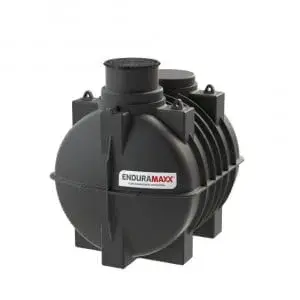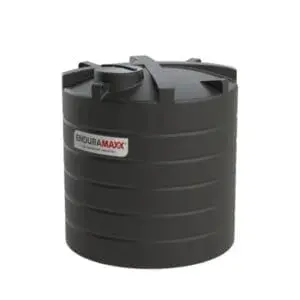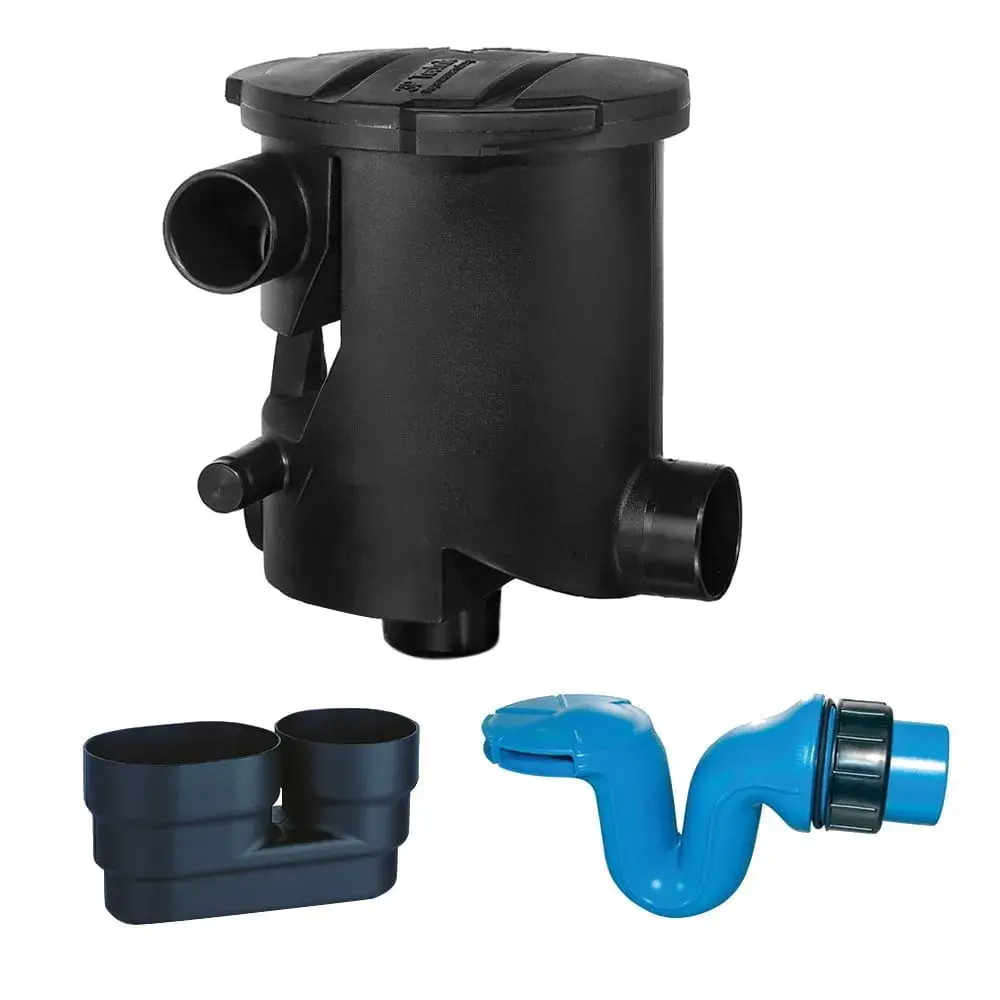Which style rainwater tank is best? Rainwater tanks are the water storage element of a rainwater harvesting system Enduramaxx manufacture both cylindrical and rectangular above ground tanks and ribbed underground tanks. These water tanks such as our 500 and 1000 litre slimline tanks can be used for domestic applications whereas the larger 10,000, 20,000 and 30,000-litre tanks can be used for commercial rainwater harvesting systems.
Rainwater tanks allow rainwater to be used at when you require It for uses such as garden irrigation and watering, washing your car, and with additional filtering or treatment other household tasks such as washing and toilet flushing.
Which style rainwater tank is best – we run over the options for above ground rainwater tanks and below ground rainwater tanks:
Above Ground Water Tanks
Vertical Water Tanks
Slimline Water Tanks – these are available in sizes from 400 litres & 1000 litres
Small Vertical Water Tanks – these are available from 300 litres to 4,500 litres – with popular 1,250 litres, 2,000 litres and 3,000-litre sizes
Medium Vertical Water Tanks: these are available from 5,000 Litres to 10,000 litres – with popular 6,000 Litres and 7,500 Litre sizes
Large Vertical Water Tanks – these are available from 12,000 litres to 30,000 litres – with popular 15,000 litres, 20,000 litres and 25,000 litres.
Horizontal Water Tanks
Horizontal Water Tanks – these are available from 500 litres to 5000 litres with our popular 1,500 litre, 2,000 litre and 3,000-litre sizes
Squat Water Tanks
Squat water tanks – available in 240 litres and 400 litres capacities
Low Profile Vertical Water Tanks
These low-profile vertical water tanks are available in 2,000 litres, 3,000 litres, 3,500 litre and 5,000-litre sizes.
Underground Rainwater Tanks
The underground water tanks we manufacture are available from 800 litres to 9,500 litres single piece moulded tanks. The smaller are available as vertical underground tanks which all to be used as pump stations if required. These below groundwater storage tanks have a heavy ribbed design to give the tank extra strength. These tanks are also designed as a low-profile horizontal tank to save the tank being subjected to ground pressures such as a vertical undergoing tank would be subjected to. The horizontal tank design also means that the hole required will be shallower requiring a smaller excavator to dig the hole.
Rainwater harvesting filters are important to make the water usable in any rainwater harvesting system and are used to filter debris from the rainwater as it flows from the collection roof before it enters the storage tank. These rainwater harvesting filters prevent the leaves and moss from entering the tank and save a build-up of sediment in the tanks. Rainwater filters have 2 inlets for incoming water which are 4? and 6? on the larger 800m2 roof area filter. On the 450m2 and 800m2 roof, filters have an overflow taking the leaves and moss away to a drain or soakaway and an outlet in the bottom of the filter for water to enter the storage tank. Rainfall statistics for your location are available to view on the Met Office website.
Your roof surface is the catchment area for harvesting rainwater which measures in square metres and will determine how much rainwater can be collected. It is important to know how large or small as rainwater filters, to filter out leaves and moss are designed for the roof area.
Calculating Your Roof Surface Area for Rain Harvesting is worked on the roof surface area is the size of your roof which rainwater can fall on which can be harvested. For single storey homes, your roof surface area will often be greater than your floor area however you will need to consider if it is possible to pipe all the water to one area for storage in tanks.
View our article on Calculating Your Roof Surface Area for Rain Harvesting here
Does the material of your water tank matter?
This depends on the purpose of the water you are storing – for water tanks for irrigation and car washing, this may not be too much of a problem. If the water is going to be used for drinking for livestock or human consumption the tank needs to be approved for this purpose. Our plastic potable water tanks are WRAS approved and approved for food contact ensuring that there is no tainting of the water from the material used to manufacture the tank. Metal water storage tanks can rust and corrode over time as well as concrete tanks. This means that the rust or parts of the tank will leak into your rainwater.
What is the best type of Rainwater Tank to Purchase?
If you are looking for a cost-effective, robust water tank that will not grow algae, please view our products here. Plastic tanks are the first choice for a reason. Still under decided about rainwater tanks, which style is best? – please get in touch today.
Posts By Topics
- Blog (303)
- Chemical Storage Tanks (118)
- Chemical Dosing Tanks (114)
- Chemical Tanks (114)
- Water Tanks (58)
- Rainwater Harvesting Tanks (43)
- Vertical Rainwater Tanks (31)
- Vertical Storage Tanks (31)
- Cone Bottom Tanks (19)
- Conical Cone Tanks (18)
- Rainwater Harvesting (17)
- Water Bowsers (15)
- Horizontal Tanks (14)
- Potable Water Tanks (13)
- Farming (9)
- Case Studies (8)
- Industrial Storage Tanks (7)
- Liquid Fertilser Storage Tanks (6)
- WRAS Approved Potable Tanks (6)
- Wine and Beer Production (6)
- Horizontal Transport Tanks (5)
- Microbrewery (5)
- Rainwater (5)
- Category 5 Break Tanks (4)
- Cider Production (4)
- Mixer Tanks (4)
- Molasses Tanks (4)
- Polyethylene tanks (4)
- Rainwater Filter Kits (4)
- SPECIALIST & BESPOKE TANKS (4)
- Bunded Tanks (3)
- Slimline Tanks (3)
- WRAS Approved (3)
- Clarification Tanks (2)
- Crosslinked Polymer Tanks (XLPE) (2)
- Fertiliser Tanks (2)
- Sump Tanks (2)
- Tank Installation (2)
- Water Butt (2)
- underground water tanks (2)
- ACCESSORIES & FITTINGS (1)
- ATV & UTV SPRAYING UNITS (1)
- Above Ground Effluent Tanks (1)
- Bespoke Tank Frames (1)
- Category 5 Turret (1)
- Caustic Soda Tanks (1)
- Closed Top Bunded Tanks (1)
- Craft beer (1)
- Effluent Tanks (1)
- Enduramaxx (1)
- Ferric Chloride Tanks (1)
- Fire Safety Regulations (1)
- Fire Sprinkler Water Storage Tanks (1)
- Industrial Water Tank (1)
- Open Top Bunded Tanks (1)
- Open Top Cone Tanks (1)
- Open Top Vertical Tanks (1)
- Polyethylene Potable Water Tanks (1)
- Polyvinylidene Fluoride (PVDF) Tanks (1)
- Polyvinylidene Fluoride Tanks (PVDF) (1)
- Pressure Washers (1)
- Pro Series Spot Sprayers (1)
- RWH (1)
- Sodium Hydroxide Storage Tanks (1)
- Sprayer Fill-up Tanks (1)
- Uncategorised (1)
- liquid fertiliser tank (1)
Sign up to the newsletter
enduramaxx.marketing
Related Posts
Collecting Rainwater for Gardening: Garden Water Tanks
Collecting Rainwater For Gardening – How do you collect rainwater and what are the benefits of...
Save Water With The Best Quality Rainwater Tanks Above & Below Tanks
Save Water with the Best Quality Rainwater Tanks, for those living on rural properties and running...
5 Reasons For Domestic Rainwater Harvesting | Enduramaxx
5 Reasons For Domestic Rainwater Harvesting – at some times of the year there’s uncertainty around...
Related Products
From £1,080.00 inc. VAT
£900.00 exc. VAT
From £1,344.00 inc. VAT
£1,120.00 exc. VAT
From £768.00 inc. VAT
£640.00 exc. VAT
£480.00 inc. VAT
£400.00 exc. VAT





